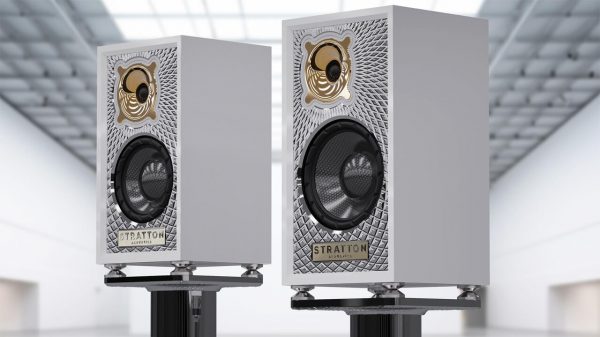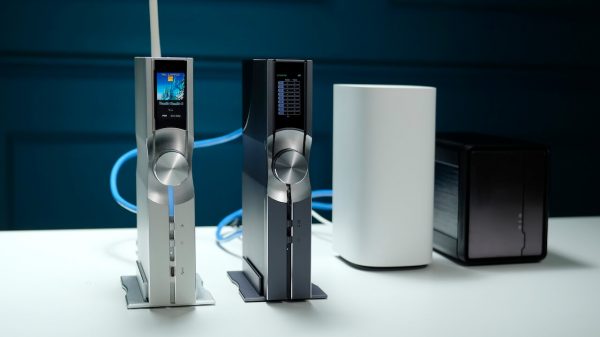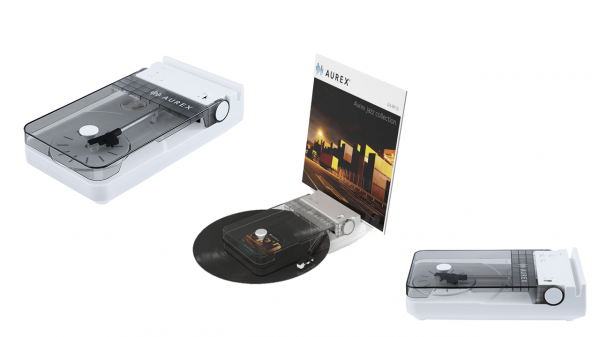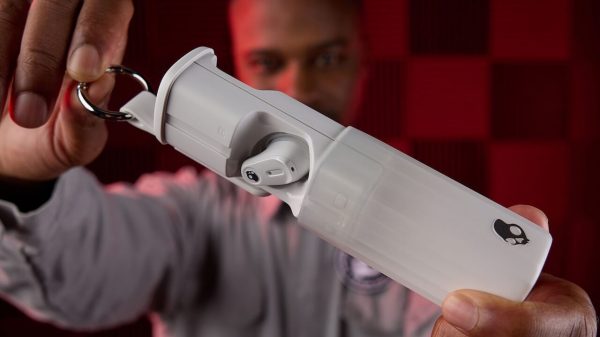At a press preview in New York City earlier this week, we got a peek (and a listen) to two of Philips’ upcoming headphone models: the Fidelio T2 in-ear TWS (True Wireless Stereo) earbuds ($279) and the Fidelio L4 TWS Over-Ear headphones ($349). “Fidelio” is the brand that Philips reserves for its flagship models and both of these new phones incorporate the company’s latest developments in headphone technology. These two models will be coming to the U.S. market over the next few months, competing for your ears (and your wallet) in the fairly crowded $200-$400 price range.
The company shared recent research from FutureSource which revealed that headphone and earbud owners rate “long term comfort” as the number one deciding factor in product satisfaction, higher even than “sound quality” for the first time. This could be due to the recent work-from-home movement forcing many of us to wear headphones or earbuds for longer periods as we participate in hour after hour of Zoom calls and Team meetings. Philips has invested much of their energy in refining the fit and comfort of their headphones and earbuds. But this isn’t to say they’ve ignored improvements to sound quality. Far from it.

Over the Ear
The over-ear Fidelio L4 model features a new full range driver coated with graphene coating to add rigidity, reduce distortion and lower the weight. The latest LC3 and LDAC Bluetooth codecs are supported to improve sound quality while also extending battery life. Call quality is also improved thanks to a new four-microphone system which uses hybrid adaptive active noise cancelling (ANC). Company reps say the new ‘phones are particularly effective at reducing wind noise, so your boss won’t know you’re at the beach while on a conference call (just make sure to keep your camera off).

Clamping force and earpad design have both been tweaked to provide a secure fit without excessive pressure on the temples or ears. I wore a pair of the L4s for several hours and found them to be extremely comfortable.
The L4 supports multipoint Bluetooth connectivity to easily and quickly switch between paired devices. Touch controls on the L4’s ear cups allow you to pair the headphones, adjust volume and navigate your music. The unit is also compatible with Google Assistant so you can control music playback or smart home devices by voice right from the headset’s built-in microphones.
The company estimates a playback time of 50 hours with a full charge without ANC active or 40 hours with ANC enabled. The unit comes with a standard 1/8-inch (3.5mm) headphone cable in case you run low on battery or just prefer a wired connection. The L4 comes with a sturdy travel case, the afore-mentioned headphone cable and a USB-A to USB-C charging cable.

I spent some quality time with the L4s listening to a number of tracks in high resolution audio and lossless FLAC stereo and in immersive Dolby Atmos and 360 Reality Audio sound from TIDAL. Bass was solid and full while vocals were clear and articulate with nice imaging. “Royals” performed by Lorde and “Alive” and “Bright Lights” from deadmau5/kx5 were particularly effective at showcasing the L4’s deep bass extension: low and precise without boominess or bloat. On the softer side, “The 30th” by Billie Eilish presents an intimate session with the singer/songwriter starting with a simple vocal with guitar accompaniment, building into a deeply layered and textured crescendo in the bridge with multiple vocal harmonies, additional guitar, keyboard and percussion. This all ends abruptly and falls back to simple voice and guitar. It’s a powerful song and is represented well on the L4s.
On the more “audiophile-approved” side, the track “Prodigal Daughter” by Aoife O’Donovan and Allison Russell sounded warm and inviting on the L4s with nice articulation of the finger-picking and guitar strumming, solid bass drum reproduction and nice detail in the drummer’s brush work.
How About Spatial Audio?
On immersive tracks or “spatial audio” like the remastered 360RA version of Daft Punk’s “Get Lucky” on TIDAL the immersive effect was solid but perhaps not as “surrounding” as on some other headphones. But unlike some headphones, the L4’s reproduction of immersive tracks didn’t sound disjointed or jumbled. It was more like a slightly wider/deeper soundstage than the stereo versions of the same songs. My feeling on immersive audio like Dolby Atmos or 360RA is that these formats need to be played over actual speakers for them to be most effective. And the L4s didn’t change this impression.
The Philips Fidelio L4 Over-Ear headphones are expected to being shipping in the U.S. in November, 2023 for a list price of $349. This puts them up against some of our favorite over-ear TWS headphones like the Bowers and Wilkins PX7, S2 , Bose QuietComfort 45 and the Sony WH-1000XM5. The L4s should put up a strong showing in this category.

Stick It in Your Ear
On the in-ear side, the new T2 TWS earbuds have benefitted from many of the same improvements as their over-ear brothers, namely Bluetooth LE, LC3 and LDAC codec support for improved wireless sound quality and extended battery life. Philips says the Fidelio T2 earbuds will last about nine hours with a single charge and you’ll get an additional 27 hours of playback with the wireless charging case (with ANC turned on). A full charge takes about 2 hours and a 5-minute quick charge will provide about an hour of playback — enough for a normal person’s workout (or about ten workouts for me). If you like to sweat, or occasionally go outside in less than perfect weather, the T2’s IPX4 rating will keep these buds safe and sounding their best.
The T2s bring better sound in a smaller package, about 20% smaller than their predecessors, the T1s. The Fidelio T2’s oversized 9.2mm electro dynamic driver features the same graphene coating found in the L4s for higher rigidity, lower distortion and reduced driver weight. The T2 features a 2-way design with a balanced armature driver tuned to supplement the low bass. Like the L4, the T2 also features Google “Fast Pair” technology for ultra-quick pairing to Android devices. The buds are also compatible with Apple devices of course.

Benoit Burette, Audio Specialist from Philips, went into some detail explaining how Philips tweaked the design of the T2s to rest more securely and comfortably inside the ear, distributing the weight across multiple contact points. This improves not only the fit and comfort but also helps to maintain a proper seal inside the ear canal. This is critical for sound quality, particularly low bass response.

The Philips Fidelio T2 in-Ear TWS ANC Earbuds are expected to begin shipping in the U.S. in early 2024 with a list price of $279. This puts them in direct competition with popular models including Apple AirPods Pro, Bose QuietComfort II and Sony WF-1000XM5. Let the in-ear games begin!
According to the FutureSource research that the folks from Philips shared with us at the event, the global headphone market is expected to grow from about $52 Billion in 2022 to $82 Billion in 2026. And with these latest headphones, Philips is poised to take a significant piece of this pie.
Related Links:

































